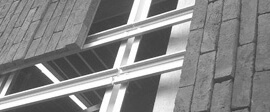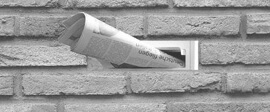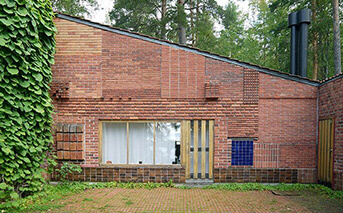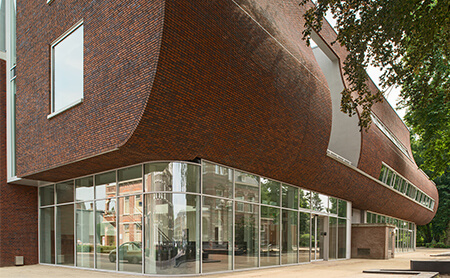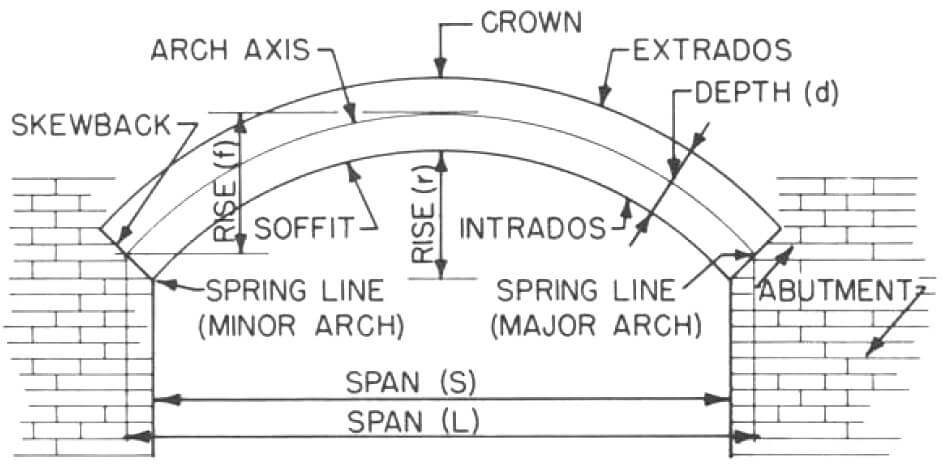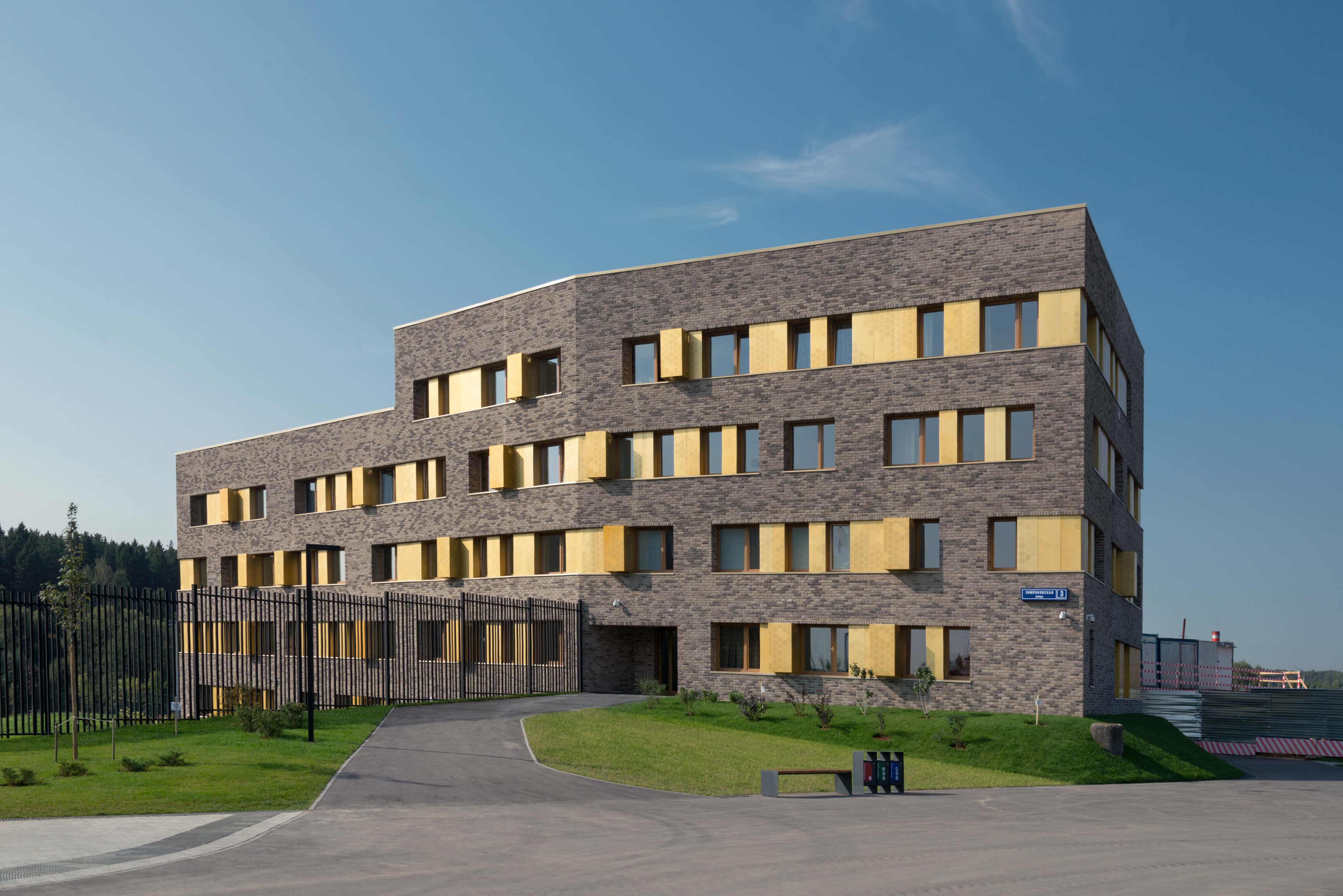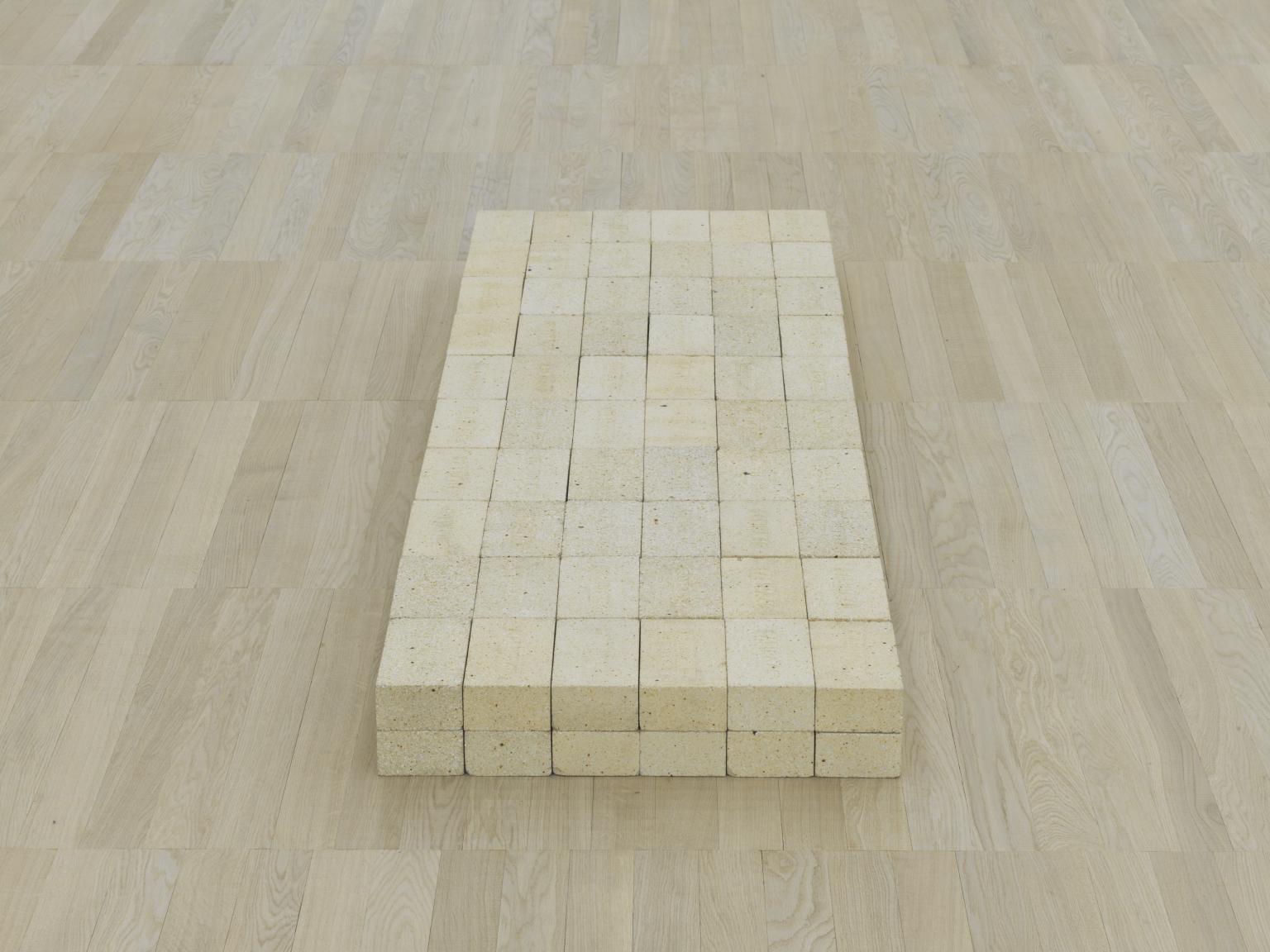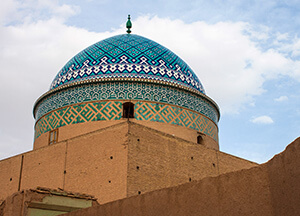Tagh Behesht by Rvad Studio
The project’s primary design methodology began with an investigation of architectural history of bazaars in Iran and the city of Mash-had. Since time immemorial, the unbreakable bond between the city bazaars and the foundations of the economy has led to bazaars taking on an important and consistent role in people’s daily lives. The principal morphology of the design is inspired by bazaars such as Sar-Shoor, Farsh and… read more
Bricks in the office interior design. SEMBA VIETNAM OFFICE by SEMBA VIETNAM
How to achieve a cozy and comfortable atmosphere in the office? We know the answer – the cornerstone of any interior is the right choice of the materials. Bricks are the perfect solution in this question. It is always a good choice: eco-friendly, durable and long-lasting material for interiors… read more
MUURATSALO EXPERIMENTAL HOUSE by Alvar Aalto
DESIGNED IN1952-54 LOCATION: Finland, Jyväskylä Hugo Alvar Henrik Aalto (3 February 1898 – 11 May 1976) was the most powerful and significant Finnish architect and designer. 200 out 500 buildings was designed by Alvar Aalto have been built. He worked mostly in International Style Modernism, where he combined functionality, atmosphere, simplycity and even national, cultural identity. As Sigfried Giedion mentioned : "Finland is with Aalto wherever he… read more
How to change your home's look with bricks.
When we say bricks we are talking about the feeling. Home is a place where we feel warmth and cosy. Therefore the decision of materials which will be presented in home intretior is very important. Through the decades bricks have been presented in interior design. Beginig from the medieval era truogh Victorian age till our time bricks suit every building and every interior. Nowadays there are hundrads… read more
Concave brick façade by KdV architectuur with collaboration of Vandersanden
If you take a look on the project De Cammeleur in Dongen, The Netherlands, created in a collaboration between KdV architectuur and Vandersanden, you are going to find the point where do the bricks and architects imagination contributes into the expressive and unusual building. „The curved façade marks a technical masterpiece of prefabricated building elements. The façade is composed of one story high elements, made up of… read more
Augmented reality. New technology to achieve complex tasks in building construction.
Fologram developed a new system that helps to avoid the errors and eliminate complicated drawings. This is a step-by-step guide that provides bricklayers with digital instructions with visualisation superimposed to the workspace. There has been a workshop in the University of Tasmania, where the students and staff have been working in teams to build a full scale dry stacked brick wall. „The University of Tasmania, Architecture and… read more
Your next home could be built by robots
Developed by New York-based company Construction Robotics, SAM100 (Semi-Automated Mason) a bricklaying robot SAM is ready and willing to lay 3,000 bricks per day, while a human lays in average around 500 bricks per day. It’s made up of a conveyor-belt, mortar pump and robotic arm... read more
Arches
The arch has long been used in masonry structures. In fact, a brick masonry arch found in the ruins of Ur in Mesopotamia dates back to 1400 B.C. Today, the brick arch is used in construction to span over wall openings and add aesthetics, as the arch is the consummate definition of form and function. This Brick Brief addresses design considerations for brick arches in veneer construction... read more
Letovo Schoolcampus, Moscow, Russia
Letovo School is a special school for gifted and motivated children aged 12 to 17. An idea to create the school came from entrepreneur and philanthropist Vadim Moshkovich: ‘My dream was to offer talented children from all over the country access to high-quality education, regardless of their parents’ financial means. This school makes it possible... read more
Clay Brick RPA - Constantia Waldorf School Hall
The elegant creation of the Constantia Waldorf School’s dance and primary school hall perfectly displays the incredibly diverse nature of Corobrik’s clay face brick – where a simple solid building block can be artfully constructed into a seemingly flowing structure, cleverly mirroring form with function and mood... read more
Bricks as a powerful medium of communication in art
Thousands of art projects have been made out of common industrial materials, but we choose the most expressive ones assembled using bircks. Here we represented a few of our favoutire art-brickworks. The shortlist begins with an artwork Equivalent VIII made by Carl Andre in 1966... read more
Fritz Höger Prize 2017: Winner Silver in the category "Newcomer"
The Vogelsang site has gone through major changes over the past century. From being an untouched and idyllic Eifel mountain ridge to usage as a Nazi training facility „Ordensburg Vogelsang“ and finally using it as an international military training area... read more
Roly - Bruno Erpicum / AABE
I’ve always paid a lot of attention to detail so that I can make the most of techniques available and really bring out proportions. But there’s something else that’s recently begun to influence my approach: after five or ten years, many modern constructions that were initially pristine lose their brilliance. And so I decided to turn... read more
Bricks of the Future
Brick of the Future presents the results of three ‘design through making’ studios at the Amsterdam Academy of Architecture. Students designed and made new bricks produced with less energie or material, recycled materials and stacked or assembled the bricks innovatively. Each studio is a coöperation with a Dutch brickfactory: Den Daas in Azewijn, Zilverschoon in Randwijk and StoneCycling-St.Joris in Beesel. Brick of the future encourages the thinking and making of new sustainable building... read more
RIFF International Architecture Expo Conference
RIFF International Architecture Expo Conference Roofs, Insulations, Façades, Floors took place in Warsaw on 11th October, at Marriott Hotel, within SHARE Warsaw 2016 International Architecture Forum. The conference organized by ABplus Events under the Honorary Patronage of the Chamber of Architects of the Republic of Poland (IARP) focused on innovative façades structures, the design of roofs and insulation works in high-profile buildings, and also presenting new trends, solutions... read more
Brick installation by Gabinete de Arquitectura wins the Golden Lion at Venice Architecture Biennale 2016
The international Jury of the 15th International Architecture Exhibition - La Biennale di Venezia composed of Hashim Sarkis (President of the Jury, Lebanon, USA), Pippo Ciorra (Italy), Sergio Fajardo (Colombia), Marisa Moreira Salles (Brazil), Karen Stein (USA) awarded Solano Benítez, Gloria Cabral, and Solanito Benít... read more
3-dimensional Brick Sculptures by Brad Spencer
This is what the author says about his brick sculpting: The integration of sculpture into architecture has always intrigued me. Sculptors have historically found ways to carve or mold various building materials into incredible works of art that in many ways define a culture. Living in the clay rich Carolinas, USA provides plenty of soil suitable for brick making and brick sculpture. The Ishtar Gates of Babylon are the historical standard and even though we live in a technology-driven world... read more
Life is an open book... Brad Spencer, the Sculptor
"I studied painting and sculpture in college where I received a BFA and MFA 1976-1983. In the late 80’s a friend and salesman for a local brick company showed me some brochures of brick sculpture that was being created out west. I began experimenting with the medium. The brick company, Boren Brick in Pleasant Garden, NC, became interested in offering brick sculpture as a product/service and set up a studio for me at the brick plant. The sales staff would get me commissions... read more
The Shakespeare Theatre wins 2016 Architizer A+ Awards
The international architecture and design website Architizer announced their 4th Annual A+ Awards 2016 on April 12th. The Architizer A+Awards is the largest awards program focused on promoting and celebrating the year’s best architecture and products. Among the award-winning buildings is the Shakespeare Theatre in Gdansk, Poland, designed by world-famous architect Renato Rizzi. Brick manufacturer Vandersanden Group won the jury prize in the Hall/Theatre category... read more
Why brick?
Being made from clay and shale brick is most abundant and natural material on earth. Bricks have been used for building innumerable structures over many thousands of years because of their durability. The reason why the brick turns into such a durable material is that, when fired through a kiln at up to 2000 degress, clay unit goes through a vitrification process which fuses the clay particles together. Unlike other materials, brick is very user and... read more
The History of Bricks and Brickmaking
Man has used brick for building purpose for thousands of years. Bricks date back to 7000 BC, which makes them one of the oldest known building materials. They were discovered in southern Turkey at the site of an ancient settlement around the city of Jericho.
The first bricks, made in areas with warm climates, were mud bricks dried in the sun for hardening. Ancient Egyptian bricks were made of clay mixed with straw. The evidence of this can be seen today at ruins of Harappa Buhen and Mohenjo-daro. Paintings on the tomb walls of Thebes portray Egyptian slaves mixing, tempering and... read more
What is a joint?
Masonry mortar is used in classic masonry. Open joints of about 10 to 15 mm wide are formed between the bricks. At the end of the working day about 15 to 20 mm of this masonry mortar is scraped out, which creates the necessary space for filling up the facade with a joint mortar. A joint mortar has 2 important purposes: A practical purpose: the open joints are filled correctly and efficiently. An aesthetical purpose: 10 to 20% of the visible wall surface consists of the... read more
Joint colours
When you choose to carry out a classic masonry instead of gluing the bricks, then the joint very much determines the end result. Depending on the brick size that is used, 10 to 20% of the facade can consist of joints. Determining the colour of the joint is a choice that may take up quite some time. After all, the joint makes or breaks the facade. Grey is the most common joint colour. It is the most neutral colour. From close up there is... read more
Types of joints
The form of the joint also influences the appearance of a facade. Of course the height of the joint plays an important role, but the depth is also important. The deeper the joint, the more it will end up in the background. This creates a shadow play between the joint and the facing brick,which especially emphasises the colour of the brick. There are various standard types of joints. The price depends of course on the labour intensiveness... read more
No joints
When you choose the purely brick effect the joint is a disrupting factor. Increasingly more contractors choose to create a facade without joints. There are 3 known methods for creating a masonry without joints: 1. Bricklaying with thin set mortar 2. Gluing together 3. Traditional masonry with ZERO® Each method generates additional costs compared to classic masonry. More facing bricks are needed per square meter of masonry. And in all cases more care and... read more
Zero
Thanks to Vandersanden there is finally a perfect way to combine modern architecture with traditionally laid brick. Vandersanden Group has developed Zero®, the patented brick without visible joints that is laid in the standard way with mortatr and trowel. The Zero® brick have a special recess on the top into which mortar can be applied in the traditional way.Moreover, the ratio between the length and width of the brick is ideal for laying brick in a half-brick bond. This clever design means that Zero® brick can be laid quickly and easily.... read more
Signa
Signa consists of a weather-resistant Rockpanel® and a composition of Vandersanden brick slips which is adhesively bonded. The panels are produced for you ready-to-use, which can give your projects a unique and striking look. Signa as an innovative facade cladding system gives a whole new dimension to brick as a facade cladding. It offers many possibilities for exclusive projects, high-rise buildings or other architectural projects. You can play with relief, colour, format, brickwork bond and create your own design with expressive facades that fully highlight the character of brick. Thanks to Signa, you can get either... read more
Brickwork bonds
The way in which a brick is laid – the brickwork bond – also strongly influences the appearance of the façade. A well thoughtout brickwork bond gives projectS extra style and character.
Brickwork bonds not only have an aesthetic effect; The choice in brickwork bond can also influence the budget. More complicated bonds, which usually necessitate more grinding work, can substantially raise the price... read more




